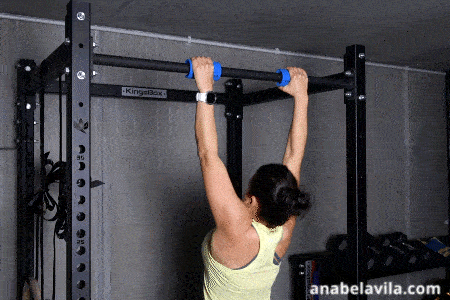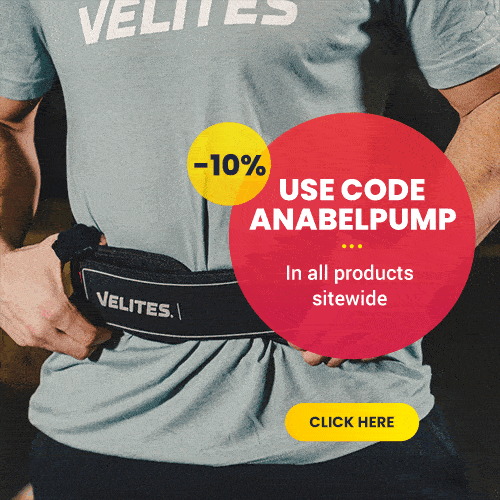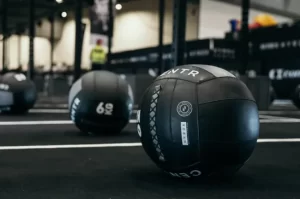Complete HYROX Rowing Guide
|

HYROX is an endurance competition that combines strength and cardiovascular capacity in a series of stations that challenge different aspects of physical performance.
Within these stations, the Concept2 ergometer rowing is one of the key testsIt tests the athlete's aerobic endurance, lower body strength and technical efficiency.
Rowing is a strategic station within HYROX, as it allows you to generate a good work rate without overcommitting muscle fatigue. However, a poor performance can cause the athlete to lose valuable seconds and arrive too fatigued to the next phase.
Another important aspect to consider is that rowing is the only station in which we are seated. This makes it an ideal time to ingest an energy gel, as the athletes have completed half of the race and there are still several demanding stations left.
Taking advantage of this opportunity to recharge energy without affecting your breathing or race pace can make a difference in your final performance.

Technical Details of Rowing at HYROX
Rowing distance required for each category
In all HYROX categories, the distance established for the rowing station is 1,000 meters.
Average Rowing Time at HYROX
Average times and maximum time ranges for each division:
Men 4:50 → Best times 3:45/4:00
Women 5:05 → Best times 4:15/4:30
Professional men 4:30 → Best times 3:45/4:00
Professional women 4:55 → Best times 4:10/4:30
*Men's doubles 4:20
*Women's doubles 5:10
*Mixed doubles 4:35
*There are no best times because there is a lot of inconsistency in the best results recorded on the official HYROX website.

Equipment used: Concept2 ergometer specifications
HYROX exclusively uses Concept2 brand machines.ensuring a standard of measurement and effort for all athletes.

Buy Remo Concept2
The Concept2 model D rowing machine is the rowing machine of reference for sports at home, in sports clubs and fitness clubs, and also for the physical preparation of sportsmen and women.
Damper and Drag Factor Configuration
Before starting the test, judges pre-adjust the damper, but athletes can modify it before starting or during the test.
Recommended settings according to category:
Women → Damper in 3-5
Men → Damper in 5-6
Use higher or lower values based on the athlete's weight and height.

*General recommendation: Although these are the suggested configurations, in terms of energy efficiency and performance a damper between 3 and 5 is recommended for most athletes. A damper that is too high can generate unnecessary fatigue in the upper body.
*It is recommended measure the Drag Factor in the heating zoneThe damper is a good reference point before adjusting the damper, as all competition machines have the same wear and tear.

Importance of Rowing in General Performance
The 1,000 m rowing is a station that directly affects the total time in HYROX.
Benefits of rowing for muscular strength and endurance
Optimal rowing technique for HYROX
Good performance at the rowing station depends to a large extent on technical efficiency.
Recommended cadences for HYROX (20-30 SPM) and the effects of cadences outside this range:
Less than 20 SPM → Too much muscle strain.
More than 30 SPM → Inefficient technique and excessive energy expenditure.
Proper body position during rowing
1.- Catch Position
- Knees bent, back neutral and core activated.
- Arms extended with a relaxed grip.
- Weight slightly forward towards the toes.

2.- Drive Phase
- First the legs are extended, then the trunk and finally the arms.
- Maintain a strong and controlled pull.
- Do not pull too hard with your arms too soon.

3.- Recovery (Recovery Phase)
- The reverse sequence: Extend the arms, flex the trunk and gather the legs.
- Maintain a steady pace without unnecessary pauses.

Technique and differences between rowing in training and in competition
It is important to row technically well in training, although in competition a different strategy may be adopted to save energy in the lower body.
Some athletes at HYROX choose to reduce the use of the legs and focus on lumbar extension to conserve energy in the hips and quads.
However, training with poor technique can lead to lower back injuries. Many athletes experience back pain and attribute it to dead weight or other exercises, when in fact it comes from poor rowing technique.
In competition you can modify the technique to optimize your performance, but in training you must row with the correct technique to avoid problems and improve the efficiency of the movement.
Training strategies for improvement in the rowing season
When it comes to optimizing performance in the rowing season, it is critical to implement a combination of complementary exercises and specific workouts that focus on different aspects of physical performance. Here are some effective strategies that can help you reach your goals.
Complementary exercises
Complementary exercises are essential to develop the strength and endurance needed to improve in rowing. Here are a few that you can include in your routine:
Dead weight → This exercise is fundamental, since. strengthens the thrust phase, which is key to generating power on each stroke. By engaging the muscles of the lower back, glutes and legs, deadlifts not only improve overall strength, but also contribute to better stability in the boat.

Hip Thrusts → Strengthening the buttocks is a priority in rowing training.These muscles are crucial for propulsion and stability. With hip thrusts, you ensure that you develop strength in the posterior chain, which will allow you to make the most of every stroke and maintain good posture at the rowing station.
Pull-ups and barbell rowing → These exercises are key to develop upper body strengthwhich is essential for maintaining proper technique during rowing. Pull-ups improve back, shoulder and arm strength, while barbell rowing works on core strength and stability, which in turn helps transfer power from the legs to the hands more efficiently.

Specific training
In addition to complementary exercises, it is crucial to perform specific workouts that simulate competition conditions and challenge your limits. Here are some suggestions:
3 x 1000m at controlled pace (rest 2 minutes). This training will help you improve your endurance and aerobic capacity. By maintaining a controlled pace, you will become familiar with sustained effort, which is vital for long distance competitions.
5 x 500m at competition pace (rest 1 minute). By focusing on this segment, you will work specifically on speed and race strategy. This type of training will teach you to manage your energy and increase your sprinting ability, crucial skills in the final stages of a race.
5 x 250m at maximum intensity with short breaks. This exercise is designed to push your anaerobic capacity to the limit. By performing short sprints with limited rests, you will improve your explosive power and your ability to recover quickly, skills that are vital in competitive situations where every second counts.

By incorporating a combination of these exercises and workouts into your weekly routine, you will be on the right track to dramatically improve your performance at the rowing station. Remember to always listen to your body and adjust workouts according to your personal needs and goals - effort and dedication will take you far!
How can I train if I don't have a rowing machine?
If you are preparing for a HYROX but do not have accessible rowing you can use these alternatives:
Stationary bicycle: If you have access to a spinning or ergometer bike or Assault Bike, you can make an easy change. Doubling the distance covered on the bike compared to rowing is recommended, keeping the same time in intervals. This way you will stimulate the aerobic system, but on the other hand you will not work the posterior chains as much as in rowing.
Burpees: An alternative to generate a cardiovascular stimulus is to do a burpee for every 15 meters of distance you need to row. Just like riding a bike, the way it impacts the muscles will be different, but you will still achieve good results.
Personal tips for the Competition
Recommended ergometer settings on race day
Adjust the Damper according to your strength and endurance: Not all athletes have the same technique or strength, so it's crucial to find a setting that allows you to be efficient without wearing yourself out too quickly. Too high a Damper can cause you to expend more energy than necessary, while too low a Damper could leave you feeling like you're not making the most of your capabilities.
Check the Drag Factor on the screen to make sure you are at the correct setting: This is a key point that is often overlooked. Make sure the Drag Factor is in a range that allows you to paddle comfortably while maximizing your power and speed.

Breathing techniques to maintain efficiency
Synchronize your breathing with each pull: Exhale as you push off with your legs and inhale during the recovery phase. This technique not only optimizes oxygenation of the muscles, but also helps maintain a steady pace that improves endurance. Try counting under your breath to keep in sync.
Use diaphragmatic breathing. Be sure to inhale deeply using the diaphragm rather than shallow breaths, which will help maximize lung capacity and keep you relaxed during the competition.
Fatigue management
Maintain a steady cadence without unnecessary peaks of effort: A steady effort will allow you to better manage your energy throughout the race. Avoid fast starts that can leave you out of breath. Instead, build your pace slowly and try to maintain it until the end.
If you plan to take a gel, this is the best time: Doing this during a quiet phase will allow you to digest the gel without interfering too much with your pace. Also look to stay hydrated by taking small sips of water at regular intervals to avoid dehydration.
Mental preparation and focus
Visualize success. Before the race, close your eyes for a few moments and visualize a successful run. Imagine your technique, your breathing and your pace as you have always trained. This visualization technique can help you establish a positive mindset.
Set achievable goals. Set realistic short- and long-term goals for the competition. This will not only give you a clear focus, but will also allow you to measure your progress during the race.
With these tips, you will be better prepared to face the competition with confidence and optimize your performance on the ergometer. Remember that constant practice and reflection on what works best for you are key to long-term success. good luck!






